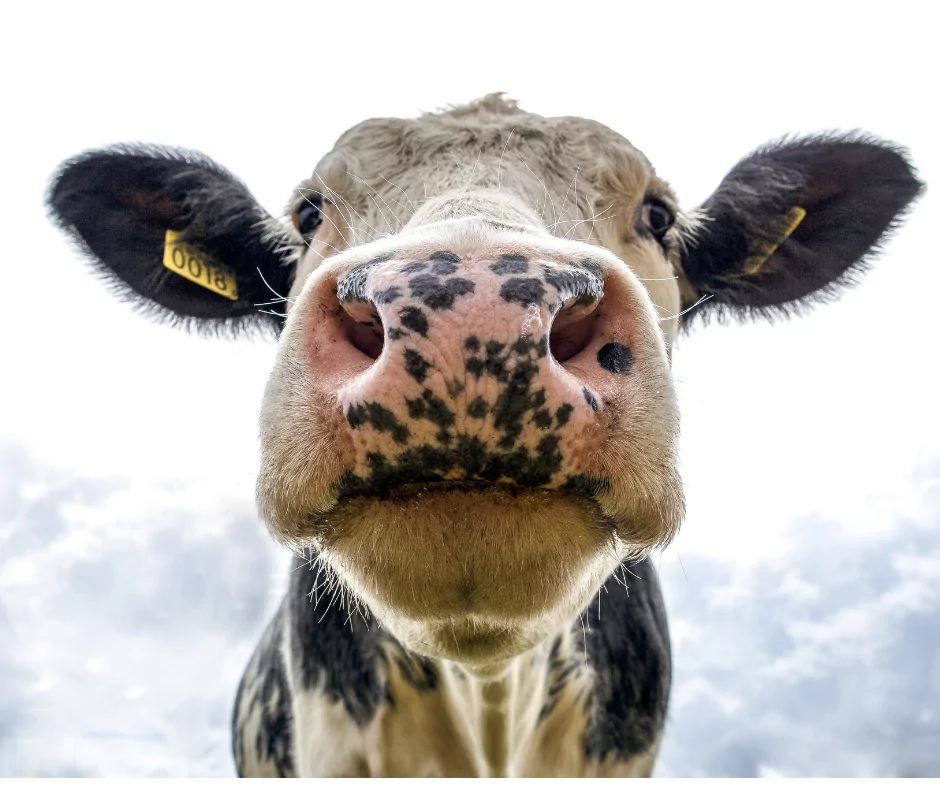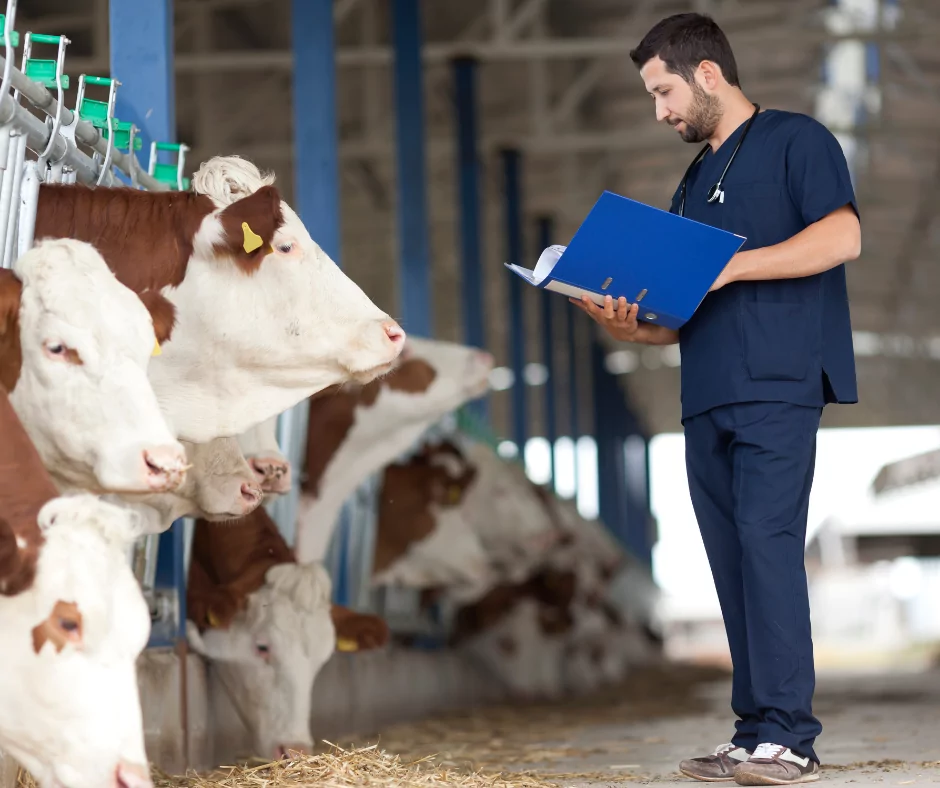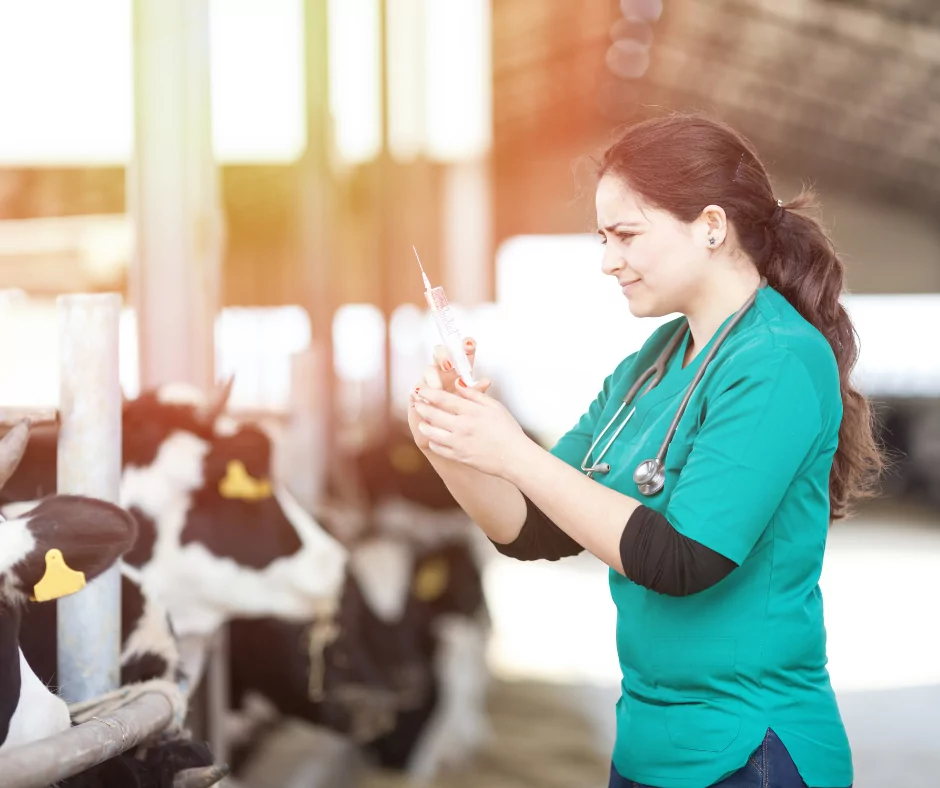When hearing about epidurals, most people, veterinary professionals or not, will recognize it as something given to women in labor. But, caudal epidural anesthesia is also commonly used in large animals. It is easy, cheap, and effective in controlling pain during surgeries.
You can also read more about this topic on the NCBI’s website.

How Often Should This Technique be Performed?
Ruminants, like cattle, are difficult to put under general anesthesia for several reasons. First and foremost, it is rarely possible to transport a cow to a large animal hospital, and not all will be equipped to perform general anesthesia on cattle.
General anesthesia is also very expensive, which is, of course, a reason it is rarely used on commercial cattle. Most importantly, ruminants have a high risk of developing complications. When anesthetized and lying down, cattle are so heavy they can cause damage to themselves. This can lead to:
- Regurgitation
- Bloating
- Muscle damage
It means that putting a cow under any kind of general anesthesia is considered a high-risk surgery.
So, surgeries done under local anesthesia, like a caudal epidural, are preferred in most cases and are very common in most parts of the world. It is essential knowledge for any large animal veterinarian.

Performing a Caudal Epidural Anesthesia in Cattle
(Please note, you should never attempt to treat or inject animals. This procedure is solely for veterinary professionals to complete.)
In large animals, like cows, the most common injection site for caudal epidural anesthesia is the first coccygeal intervertebral space. In layman’s terms, that means the injection is done in between the first two of the tail vertebrates in the spine.
This space can be visualized by “pumping” the tail up and down. Then the veterinarian will feel for the first space that can easily be felt moving at the basis of the tail. This is the injection site.
The injection technique itself is generally considered relatively easy to perform in standing animals. The area will be clipped and disinfected thoroughly. A needle is then inserted into the intervertebral space slowly while pointing slightly towards the head.
When the needle is safely within the epidural space, within the spinal canal, the injection can be done. A low dose or low volume of a local analgesic (painkiller) drug is injected for a caudal epidural. The analgetic will desensitize the sacral nerves within the spinal canal. Meaning a large part of the back area will be numbed.
The block will produce analgesia of:
- Vagina and vulva
- Anus and rectum
- Scrotum
- Urethra
- Pelvic viscera
However, due to the small dosage of injection, no motor function of the hind limbs is affected – the cow will stay standing.
It is most often used for perineal reconstruction, retraction of the uterine cervix, and suturing tears in the vulva or perineum.
The Longevity of the Caudal Block
The caudal epidural anesthesia’s efficacy and longevity depend on the volume injected and the drug of choice. The most common medications used for the block are Lidocaine and Bupivacaine – sometimes in combination with Xylazine.
Generally, the onset of analgesia occurs within five minutes for Lidocaine and Bupivacaine, with the onset of analgesia with Xylazine is a bit longer at 12 minutes.
The longevity will also be affected if some of the products mentioned above are combined, with Lidocaine/Xylazine providing the longes analgesia with 300 minutes. When only using Lidocaine, the duration of analgesia is only around 90 minutes.
So which drug and combination to choose depends entirely on the expected length of the surgery and the skills and preferences of the veterinarian.

Side Effects of a Caudal Epidural Anesthetic
Although not a “true” side effect as it’s not an untoward reaction to the drug, one of the biggest worries when performing caudal epidural anesthesia is that the cow will suddenly lie down. This can be quite dangerous, not only for the cow being operated on but also for any veterinarian or assistant nearby.
A cow will often show minor side effects first, including ataxia, which is the loss of control of the hindlimbs. The cow might start slipping or stumble as an early sign that the local analgetic diffuses into the motor neurons.
Often this will happen due to a too high dose being given. But, sometimes, a cow will respond more significantly to a drug than what you expected or what is described in the literature. They’re live beings, and sometimes that will surprise even the most experienced veterinarian!
Other side effects will be in response to the drug, but these are very rare. In the vast majority of cases, the caudal epidural anesthesia will have the attended effect and efficacy, with few to no side effects.
Here is an explanatory video for Caudal Epidural Anesthesia in Cattle. Watch the video for more information.
What is Epidural Anesthesia?
This type of anesthesia involves the injection of a local anesthetic into the epidural space located at the sacrococcygeal junction or the first intercoccygeal junction. Other than local anesthetic, other appropriate drugs can be administered too if necessary.
Use of Caudal Epidural Anesthesia in Bovine
The block is used to produce analgesia of the perineum, tail, pelvic viscera, and genitalia. Routinely is used for perineal reconstruction, embryotomy, retraction of the uterine cervix, for suturing tears in the vulva or perineum, reduction of uterine prolapse, etc.
However the hind limbs retain their mobility and motor function during the process.
When Pain in Cattle is not Managed Properly
The following adverse effects can occur when pain in cattle is not managed effectively:
- The healing process can be delayed.
- A decrease in weight gain.
- Productivity can be impacted negatively.
- Issues with respiratory functions.
- Issues with cardiovascular functions.
- Muscle atrophy.
- Degeneration of joints.

Conclusion
Caudal epidural anesthesia allows for simple surgeries to be completed fast and safely, without running the risk of putting the large animal under general anesthesia.
It is also an easy technique to perform with few issues and side effects—all in all, a valuable tool in any veterinarian’s toolbox.
If you want to see more educational videos, go to our Videos section.
